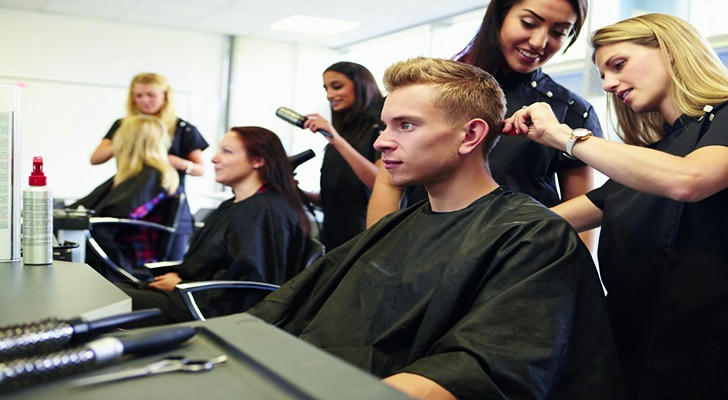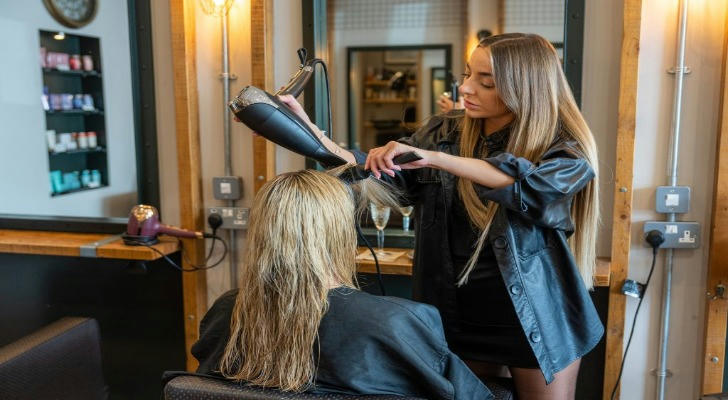How to get started in the hairdressing industry: the path from interest to professional skills
In the United States, hairdressing is not only a craft, but also a widely recognized career path. For many people who are creative, love fashion and communicate with people, becoming a hairdresser is an ideal way to start a career. Especially for those who want to arrange their time flexibly and pursue skill growth, the hairdressing industry provides sustainable development opportunities.

Ⅰ. Basic Responsibilities of Hairdressing Apprentices
Before officially becoming a hairdresser, many people will choose to start as an apprentice. Hairdressing apprentices work under the guidance of professional hairdressers, and their main tasks include:
- Assist in washing and caring for customers' hair
- Prepare and clean tools and workstations
- Observe and learn various hair cutting, dyeing, and styling techniques
- Follow the instructor's instructions and provide basic assistance
This experience not only enhances practical skills, but also helps build soft skills such as customer service and professional ethics.
Ⅱ. How to find the right introductory course
Hairdressing courses are usually offered by hairdressing schools, community colleges or vocational training institutions. The course content includes:
- Hair structure and care basics
- Common hair cutting techniques and tool use
- Hair design and styling techniques
- Disinfection and safe operation procedures
- Customer communication and service etiquette
When choosing a course, it is recommended to pay attention to the following points:
Whether it has state certification: Make sure the course meets the learning requirements of the state cosmetology license.
Whether it includes practice: Whether the course arranges enough hands-on practice.
Whether the teaching time is flexible: Convenient for balancing life or part-time work.
Whether to provide recommended internships: Helps to find a job or apprenticeship opportunities later.

Ⅲ. Steps to becoming an apprentice
Complete the introductory course: Most hairdressing apprenticeship positions require basic hairdressing skills, so systematic learning is the first step.
Get a license or register: Some states require hairdressing apprentices to register or obtain a primary certificate. For details, please contact the local cosmetology committee.
Find an apprenticeship position: You can apply through hairdressing schools, beauty salons, industry association recommendations, etc.
Prepare for an interview: Show your learning results (such as a portfolio) and demonstrate your learning attitude and service awareness.
Sign an apprenticeship agreement: Clarify working hours, responsibilities and mentor arrangements to ensure a legal and standardized internship experience.
IV. Growth and development path
Hairdressing apprentices usually learn on the job and can apply for a formal license after accumulating a certain amount of time. Those who perform well in the apprenticeship stage can develop in the following directions in the future:
- Independent hairdresser
- Hair stylist
- Hair dye/styling expert
- Hairdressing lecturer or trainer
- Open a personal hairdressing studio
This is a career path that focuses on both technology and interpersonal skills, suitable for those who are willing to work hard for a long time.

Ⅴ. Case Analysis: Jacob's Journey to Hairdressing Apprenticeship
Jacob is from California and was originally a barista. Inspired by his friends, he signed up for a basic hairdressing course. After the course, he took the initiative to contact a local salon and got an apprenticeship opportunity.
Under the guidance of his mentor, Jacob gradually mastered basic skills such as blow-drying, shampooing, and simple styling, and accumulated experience in serving customers. Six months later, he obtained a cosmetology license and became a formal employee of the salon. He said: "Switching from a barista to a hairdresser is a complete transformation for me. This industry has allowed me to see the possibility of creativity and technology, and it has also made me really like the way of working with people every day."
Ⅵ.Conclusion
Becoming a hairdressing apprentice is the first step to enter the hairdressing industry, and it is also the starting point for learning, growing, and realizing career ambitions. By choosing the right courses, actively seeking apprenticeship opportunities, and constantly honing your skills in practice, you can steadily move towards your career goal of a professional hairdresser.
If you’re looking for a career that allows you to be creative, grow and build real connections with people, take the first step towards becoming a hairdressing apprentice today.
